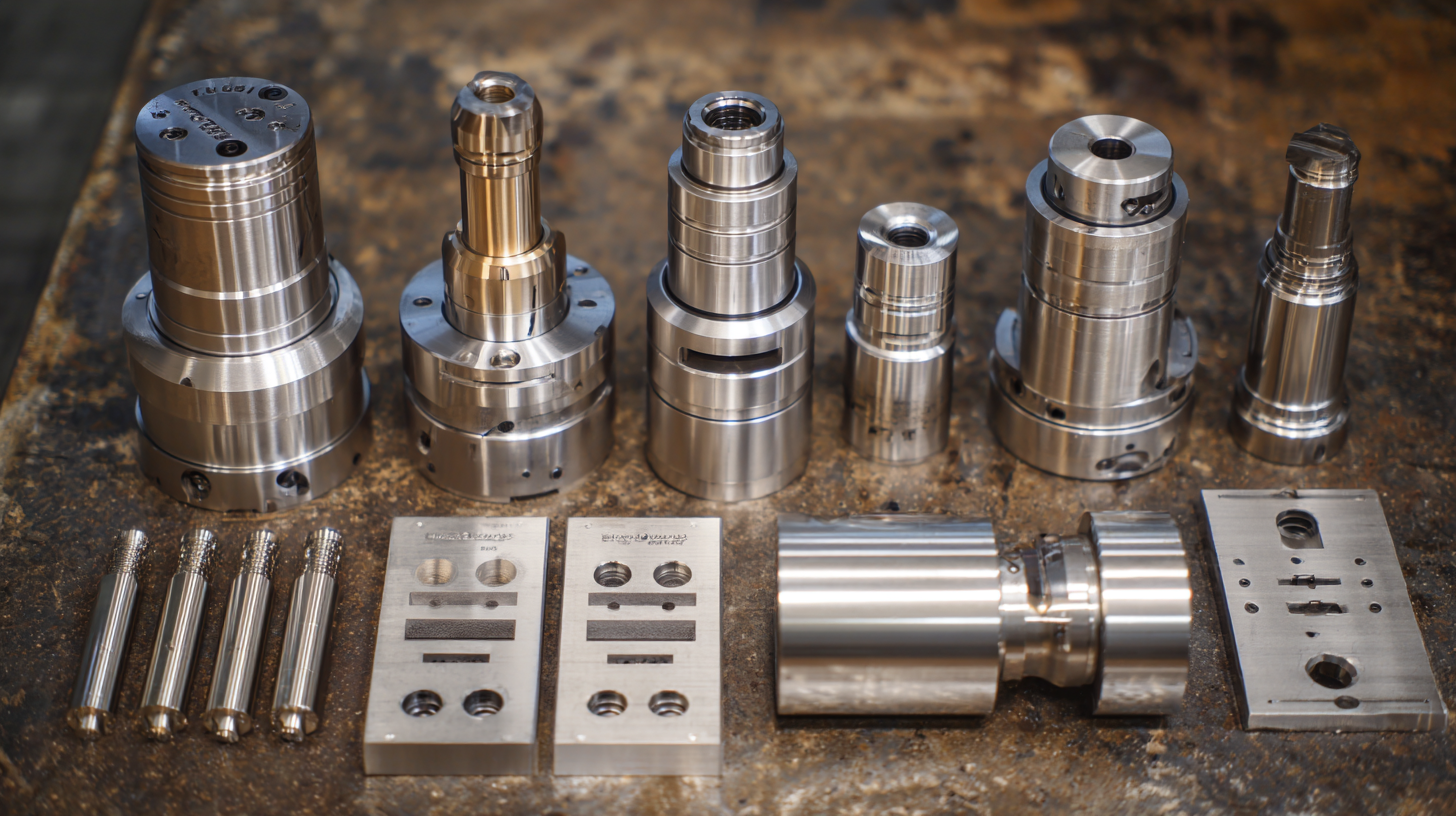
- sales@bjbod.com
- Mon - Sat at 7:00AM to 9:00PM

In the world of manufacturing, maximizing lathe efficiency is critical to maintaining competitiveness and profitability. With the global machine tool market expected to reach approximately $100 billion by 2026, the importance of selecting the right tooling for lathe operations cannot be overstated. According to a recent report by Deloitte, businesses that invest in advanced tooling for lathe processes can see productivity improvements of up to 30%. Furthermore, the right tooling not only enhances speed and precision but also reduces material waste and operational costs. As manufacturers strive for greater efficiency, understanding the diverse benefits of various tooling for lathe is essential for driving performance and achieving long-term success. This blog will explore the top strategies for selecting the best tooling, ensuring that manufacturers can make informed decisions that align with their operational goals.

When it comes to maximizing lathe efficiency, understanding tooling requirements is crucial for achieving optimal performance. The selection of the right tools can drastically influence the quality of your work and the overall productivity of your projects. Factors such as material type, cutting speed, and depth of cut must be carefully considered to ensure that the tools you choose align with your specific machining tasks.
Tip 1: Always choose tooling materials that are compatible with the materials you are working with. High-speed steel (HSS) and carbide tools are popular choices, but each material has its strengths. For example, carbide tools excel in high-speed applications and can provide a better finish on harder materials, while HSS is more versatile for a range of projects.
Tip 2: Pay attention to the geometry of your tooling. Tool shapes and angles can significantly impact the cutting process. Properly shaped tools reduce friction and enhance chip removal, leading to better surface finishes and extended tool life. Experimenting with different geometries can help identify the best option for your specific lathe operations.
Tip 3: Optimize the tool setup to minimize vibrations and ensure stability. A well-tightened, properly aligned tool holder will contribute to smoother cutting, reducing wear and enhancing the precision of your work. Investing time in setting up your tools correctly pays off in increased productivity and less downtime caused by tool replacement or adjustment.
When selecting tooling materials for lathe efficiency, understanding the market dynamics and material properties is crucial. According to recent industry analysis, the global metal cutting tools market is projected to reach USD 115 billion by 2026, with lathe machines representing a significant share, as they are vital for precision machining across various sectors. The choice of tooling directly affects productivity, as high-quality, durable materials can improve tool life and reduce machining cycles.
Key factors in selecting tooling materials include hardness, wear resistance, and thermal stability. For instance, carbide tools have become popular due to their superior wear resistance, allowing for longer intervals between tool changes. Reports indicate that carbide tooling can last up to five times longer than conventional high-speed steel, thereby optimizing efficiency in production. Additionally, advancements in coating technologies, such as TiN and TiAlN, enhance tool performance by providing increased hardness and lower friction. These considerations ultimately contribute to a lathe's performance, making the right tooling selection imperative for maximizing operational efficiency in machining environments.

 In the competitive landscape of industrial manufacturing, efficiently selecting the right lathe tooling can significantly enhance operational success. Recent success stories from various industries illustrate how strategic tooling choices lead to substantial improvements in productivity and cost-effectiveness. Companies that have embraced innovative lathe tooling have reported increased precision in their machining processes, demonstrating the direct correlation between tooling selection and overall lathe efficiency.
In the competitive landscape of industrial manufacturing, efficiently selecting the right lathe tooling can significantly enhance operational success. Recent success stories from various industries illustrate how strategic tooling choices lead to substantial improvements in productivity and cost-effectiveness. Companies that have embraced innovative lathe tooling have reported increased precision in their machining processes, demonstrating the direct correlation between tooling selection and overall lathe efficiency.
One notable case in point is a leading machine manufacturer that achieved remarkable sales growth and market standing due to their advanced approach to tooling. By focusing on tailored tooling solutions that meet specific production demands, they not only set a benchmark for quality but also established themselves as a global leader in the industry. This case exemplifies the impact of strategic tooling selection across sectors, emphasizing that the right tools are integral to driving performance and fostering sustainable growth in a challenging market.
When evaluating and comparing lathe tool brands and models, it is essential to consider several key factors to enhance productivity and maintain quality. The market is abundant with options, but understanding the specific needs of your operations can help streamline the selection process. Sources from the Manufacturing Technology Association indicate that the right tooling can increase lathe efficiency by up to 30%, showcasing the impact that informed choices can have on performance.
Tip: Always prioritize tools that offer a balance between durability and precision. Brands that utilize advanced materials and cutting-edge manufacturing processes tend to deliver better service life and performance. Look for tools that incorporate carbide inserts or high-speed steel, as these materials are known to withstand high stress and temperatures, increasing their longevity.
Additionally, consider the compatibility of the tools with your existing machinery. A tool that integrates seamlessly with your lathe can lead to reduced setup times and improved overall workflow. For example, reports suggest that mismatched tooling can lead to a 15% decrease in efficiency due to increased downtime for adjustments. Always refer to the manufacturer's specifications to ensure you're making the right choice for your lathe model.
| Tool Type | Material | Diameter Range (mm) | Cutting Speed (m/min) | Lifecycle (hours) | Price Range ($) |
|---|---|---|---|---|---|
| Turning Tool | Carbide | 5 - 50 | 60 - 150 | 200 - 400 | 30 - 150 |
| End Mill | High-speed Steel | 3 - 25 | 40 - 120 | 100 - 300 | 10 - 75 |
| Boring Bar | Carbide | 10 - 50 | 20 - 100 | 150 - 350 | 20 - 100 |
| Tool Holder | Steel | 12 - 40 | 50 - 80 | 100 - 200 | 15 - 60 |
Maintaining lathe tooling is crucial for ensuring long-lasting efficiency in any machining operation. One of the primary tips for prolonging the life of your lathe tools is to implement a regular inspection schedule. By routinely checking for wear and tear, operators can identify issues before they escalate, reducing downtime and improving overall productivity. Additionally, keeping tools clean and free from debris not only enhances performance but also prevents potential damage that could arise from contaminants interfering with the cutting process.
Another essential aspect of lathe tooling maintenance is the proper storage of tools. When not in use, tools should be stored in a designated, climate-controlled environment to prevent rust and corrosion. Using protective coatings or covers can further extend the lifespan of tooling by shielding it from environmental factors. Furthermore, regularly sharpening cutting edges ensures that tools maintain their effectiveness and reduces the strain placed on the lathe itself, ultimately leading to more consistent results and reduced operational costs. By adopting these practices, machinists can significantly enhance the efficiency and durability of their lathe tooling.